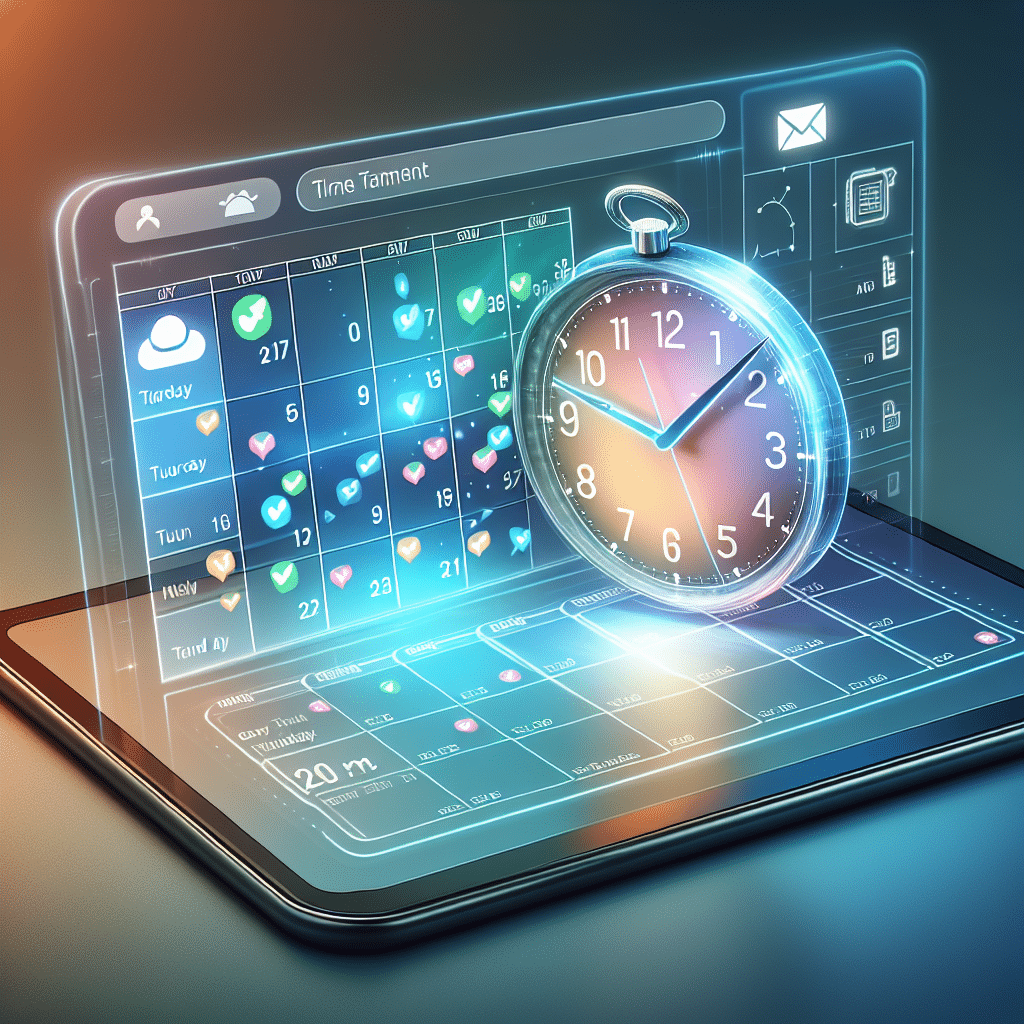A Step-by-Step Guide to Planning Your Day Digitally
Step 1: Choose the Right Tools
To plan your day digitally, start by selecting the most suitable tools for your needs. There are various applications available, each catering to different preferences. Popular options include:
- Google Calendar: Ideal for scheduling events and daily tasks with reminders.
- Todoist: Great for task management and prioritization.
- Notion: A versatile tool for notes, tasks, and project management.
- Trello: Perfect for visual planners who enjoy Kanban boards.
Pick one or combine a few that best fit your workflow.
Step 2: Set Up Your Digital Workspace
Organizing your digital workspace enhances your efficiency. Consider the following setup:
-
Create Folders: Within your chosen apps, create folders or sections for different aspects of your life—work, personal, and study.
-
Tags and Labels: Use tags to categorize tasks by priority or project. This makes it easier to filter and focus.
-
Color-Coding: Assign different colors to various categories for quick visual identification.
Step 3: Define Your Goals
Before diving into daily planning, clarify your short-term and long-term goals. Break these down:
- Long-term goals (e.g., fitness, career, learning a new skill)
- Short-term goals (e.g., tasks for the week, important meetings)
Utilizing SMART (Specific, Measurable, Achievable, Relevant, Time-bound) criteria can help in defining these goals effectively.
Step 4: Review and Reflect
Start by reviewing your previous day’s tasks. Analyze:
- What was accomplished?
- What remains pending?
- Are there recurring obstacles?
This reflection allows you to make adjustments for a more productive day ahead.
Step 5: List Tasks for the Day
In your chosen application, draft a comprehensive list of tasks to accomplish. Prioritize these tasks using a method such as:
- Eisenhower Matrix: Categorizing tasks into four quadrants (urgent/important, non-urgent/important, urgent/not important, non-urgent/not important).
- ABC Method: Label tasks as A (high priority), B (medium priority), or C (low priority).
This prioritization aids in focusing on what truly matters.
Step 6: Time Block Your Schedule
Efficiently allocate time slots to each task:
-
Estimate Task Duration: Assess how long each task will take based on past experiences.
-
Create Time Blocks: Use a calendar to assign fixed time blocks for each task, ensuring you’ve factored in breaks.
-
Add Buffer Time: Always include a buffer to avoid day-ending stress due to overrunning tasks.
Step 7: Incorporate Breaks and Downtime
Integrating breaks is essential to maintain productivity and focus. Schedule short breaks every 60-90 minutes, and plan longer breaks for meals. Techniques like the Pomodoro Technique (25 minutes of work followed by a 5-minute break) can be beneficial.
Step 8: Sync Across Devices
Ensure your digital planning tools sync across all devices, whether you use your phone, tablet, or computer. This guarantees you have access to your plans regardless of where you are. Check settings to enable cloud synchronization, so updates made on one device reflect on others.
Step 9: Utilize Reminders and Alerts
Set reminders to keep you on track. Most digital planning tools allow you to set notifications for:
- Upcoming tasks
- Meetings
- Deadlines
These alerts serve as prompts, reducing the cognitive load of remembering each obligation.
Step 10: Engage with Your Digital Calendar
Every morning, spend a few minutes reviewing your digital calendar. This ensures you’re aligned with your daily tasks and meetings. Adjust timelines or tasks as necessary based on previous day reflections or any new developments.
Step 11: Review and Update Regularly
At the end of each day, take the time to review what you accomplished and what remains on your list. Update your tasks for the next day based on this evaluation:
-
Check-off Completed Tasks: Acknowledge your achievements by marking off completed tasks.
-
Reassess Pending Tasks: Decide if they will be carried over to the next day or rescheduled.
-
Adjust Future Plans: Use insights gained to modify long-term goals or upcoming days’ tasks for alignment.
Step 12: Develop a Nightly Routine
Establish a relaxing evening routine. End your day by ensuring:
- All tasks are updated in your planner.
- New priorities or tasks are noted for tomorrow, clearing your mind.
- You prepare for the next day by laying out essentials (like an outfit or meals).
Step 13: Collaborate When Necessary
If your tasks involve teamwork, consider using collaborative planning tools like Google Docs or Trello. These platforms allow you to share your schedule, tasks, and progress with team members, keeping everyone aligned.
Step 14: Stay Flexible
Digital planning is not a static process. Life is unpredictable, and your plan must accommodate changes. Be open to adjusting your day as unexpected tasks arise or priorities shift.
Step 15: Continuously Optimize
Regularly assess your planning process. Ask yourself:
- Are you meeting your daily goals?
- Are there tools or methods that could enhance productivity?
- What patterns lead to successful days versus less productive ones?
With each reflection, aim to refine your approach, ensuring that your digital planning evolves alongside your needs.
